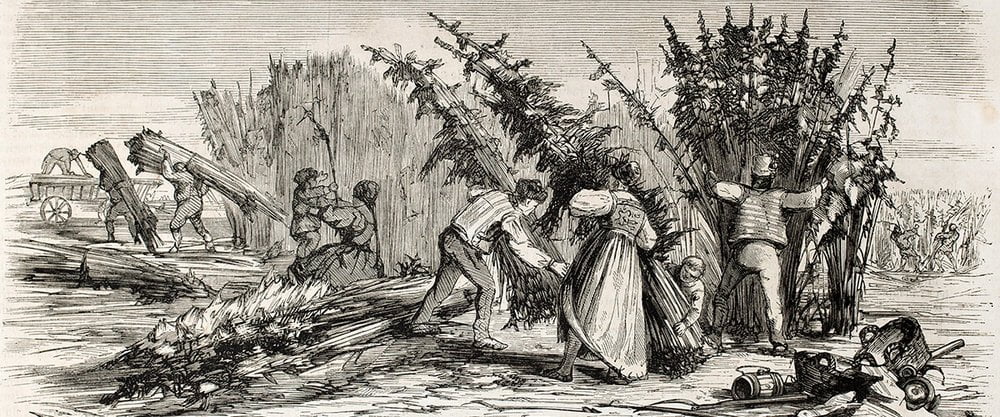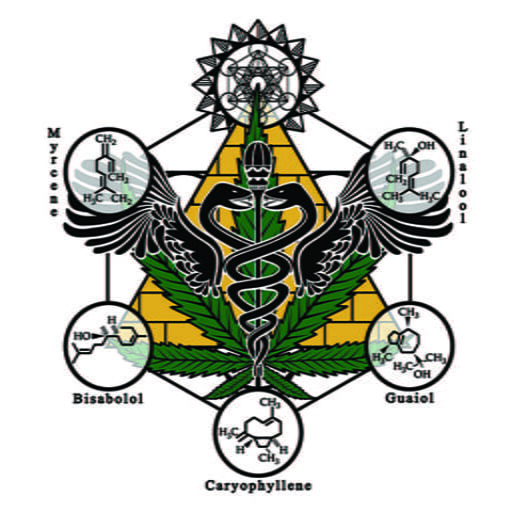In the cannabis industry, and specifically within circles of historically-minded cannabis breeders and cultivators, the term “landrace” can frequently be heard. This term is applied to varieties that are believed to have the longest localized cultivation history, with strain characteristics uniquely attributed to that localization. Officially defined by Oxford as “a local cultivar or animal breed that has been improved by traditional agricultural methods”, these varieties embody the essence of a region’s agricultural heritage. In natural and organic hemp farming, the value of landrace varieties extends beyond their historical significance; they play a critical role in maintaining genetic diversity within the cannabis gene pool. This article explores the meanings of landrace and heirloom in cannabis and other agricultural contexts, drawing comparisons and emphasizing the importance of preserving these unique varieties for the sake of current and future cannabis discovery.
Understanding Landrace and Heirloom Varieties in Hemp Farming and Agriculture
What are Landrace Varieties in Hemp Farming?
Landrace varieties are essentially the original, indigenous strains that have adapted to their local environment over many generations with little human intervention. Think back to the blackberries that have grown wild in your favorite secret spot in the town woods for generations…those are likely landrace berries. These plants have naturally developed traits that enable them to thrive in specific climate and soil types. New England landrace berries may be very different from Midwestern landrace berries, for this reason. They will potentially be different in taste, size, shape, color, and growing pattern; or they may seem quite similar to the non-discerning palate. Regardless, what makes them “landrace” is that they grew wild in those specific regions, with very little direct human intervention, and came to thrive in specific environments due to the unique characteristics they contain.
See our article on Cannabis in the African and frontier markets
When applying this idea to cannabis and hemp farming, hundreds, if not thousands of unique landrace strains exist in the world, or certainly once did. It becomes more evident in cannabis that the idea of landrace does not infer a single ideal example (as with clones), but rather a diverse population with similar characteristics. The term landrace does not mean a single standardized variety or cultivar, in most cases. In the cannabis world, landrace strains are valued for their unique cannabinoid and terpene profiles, which can lead to diverse effects and flavors. They also often carry great significance to the historical lore and general culture surrounding the cannabis plant, specifically in light of prohibition. Many of the most “legendary” strains were selected from populations of local landrace strains that originated thousands of miles away. It is important to keep in mind that landraces develop because their natural characteristics lend to survival in that local environment. For example, Afghan landrace strains are renowned for their resilience to harsh mountain climates, while varieties from Southeast Asia exhibit characteristics adapted to tropical conditions. Each of these varieties is beloved for the shape of the buds they grow, or smell and taste of the smoke. That bud shape, scientifically speaking, is the plant morphology that lent to its ancestors surviving best, where it came from. Traditional Afghanis are short, tighter plants because their ancestors would have had a better chance surviving in the wild, cold, windy mountain climates if they were shaped this way. The smell and taste of a landrace develops in similar relation to the local environment; its terpenes and flavonoids are a specific communication mechanism to localized pests and local flora, developed as a best-survival trait set over many generations of the plant’s existence.

Heirloom Varieties Signify More Human Touch
Heirloom varieties, on the other hand, are typically cultivated by farmers who have preserved them over generations, often in a specific family or community context. Most people will automatically picture their favorite heirloom tomato variety, for example. These plants are usually open-pollinated and have been passed down through the years, maintaining their genetic integrity without the intervention of modern hybridization practices.
“Heirloom cannabis” varieties may not be referenced frequently (yet), and may not have the same deep-rooted history in a particular locale as landrace strains, but the term is still meaningful. Heirloom strains often possess unique characteristics that reflect their cultural significance. These varieties can showcase the stories, traditions, and practices of the communities that have nurtured them. In considering the cannabis and hemp farming historical picture of the last 200-2000 years globally, the “OG Strains” like Sour Diesel, PK, or Green Queen are the Heirloom varieties of American cannabis. While both landrace and heirloom varieties are invaluable for their genetic traits, they differ primarily in their origins. Landrace strains emerge from a specific geographical area and have evolved through natural selection, while heirloom strains are often the result of human cultivation and selection over time. Culturally, heirlooms are often sacred to individual communities or families, versus the more regional nature of a landrace.
Read our article on “How profitable can CBD Rich Hemp Be Per acre”
Genetic Value of Landrace Strains
One of the most important aspects of all landrace varieties, regardless of plant species, is their genetic stability and complexity. Tying it back to the generational response of the plant makes this obvious. Their characteristics have developed over hundreds, if not thousands of years of natural selection. This genetic work, done mostly by “mother nature”, was a slow and steady process, and one driven by the plant’s organic response to the environment, which was highly complex and ever slightly changing from year to year in climate and pest pressure. Simply put, landraces develop in environments that are very different from our modern cannabis industry picture of the highly-controlled, supplemented, and super-static growing chambers. The result is that landraces tend to develop a significantly more complex chemical profile than modern plant varieties. For the modern breeder or groups interested in scientific discovery with cannabis and hemp, working with landrace influenced varieties allows for a more reliable genetic foundation that is also a much deeper pool than what is found in most mass-market (quick-developed) modernized varieties. When developing new parent lines, a breeder can look to landrace influenced options as one of the best sources of genetic diversity in their breeding programs.
Why Genetic Diversity Matters
Genetic diversity is crucial for the resilience of any crop, including cannabis. A diverse gene pool enables plants to adapt to changing environmental conditions, resist pests and diseases, and recover from adverse conditions. This diversity ensures the sustainability of agriculture in the face of climate change, soil depletion, and other challenges.
In cannabis cultivation, maintaining a diverse range of genetic material allows breeders to create new hybrids that might possess the best traits of their parent plants. The introduction of landrace genetics can enhance the vigor and adaptability of modern cultivars, making them better suited to various cultivation methods and climates. From a scientific discovery perspective, the chemical complexity of landrace-developed cultivars provides significantly more potential. When tested, Landrace-developed feminized hemp seed cultivars like Apollo, Painted Lady, and Purple Emperor from Davis Farms contained over forty quantifiable cannabinoids and forty-five terpenes, while the modern poly-hybrid may average two cannabinoids and five terpenes.
Comparisons Between Cannabis and Other Crops
The significance of landrace and heirloom varieties is not limited to cannabis. In agriculture, these concepts apply across various crops, including tomatoes, corn, and wheat. For instance, heirloom tomato varieties are celebrated for their exceptional flavor and uniqueness, just as landrace cannabis strains are cherished for their distinct effects and flavors.
In regions where traditional agriculture is still practiced, landrace crops often outperform commercial hybrids in terms of resilience and adaptability. Farmers who cultivate these varieties tend to prioritize sustainable practices, preserving not just the plants but also the agricultural knowledge passed down through generations.
The Role of Landrace in Preservation
Preserving landrace varieties is critical for safeguarding genetic diversity. As monoculture farming practices dominate modern agriculture, the risk of losing unique genetic material increases. Many landraces are threatened by habitat loss, climate change, and industrial farming practices. By actively working to preserve these varieties, cultivators can help ensure that future generations have access to a broader range of genetic options.
In cannabis cultivation, the resurgence of interest in landrace is a promising development. More growers are recognizing the value of these genetic treasures, leading to efforts aimed at conservation and revitalization. Programs that focus on collecting and breeding landraces can help protect these varieties while providing fresh genetic material for breeders.
As the cannabis industry matures, a collective effort to promote genetic diversity through landrace preservation will not only benefit individual growers but will also enhance the resilience and sustainability of the entire sector. Whether you are a seasoned cultivator or a novice exploring the world of cannabis, recognizing the significance of landrace and heirloom varieties is key to nurturing a vibrant and diverse future for cannabis cultivation. Look to Davis Farms as a source of unique, exceptionally stable cultivars that are direct descendants of American Feral Landrace and Heirloom varieties.
Our Latest Posts
- Landrace, Heirloom, and the Importance of Genetic Diversity in Hemp Farming and Agriculture
- How To Obtain The Necessary Licenses and Certifications In Hemp Farming
- How To Manage Pests And Diseases In Hemp Farming
- From Seed to Harvest: Understanding the hemp farming lifecycle
- How Hemp Farming Promotes Biodiversity
